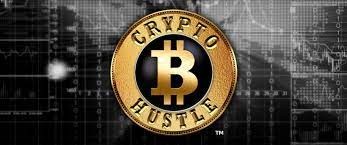CRYPTOCURRENCY FOR THE IGNORANT, or LEARNING THE HUSTLE

FUN WITH NFTs or SECURITIZING YOUR ASSETS
December 15, 2022
What Is the Soul?
December 15, 2022Perhaps on Saturday, rather than asking Elon Musk what is Dogecoin, Mr. Che should have asked him why it has value. And he kinda answered….It’s a Hustle.
Fiat money is government-issued currency that is not backed by a physical commodity, such as gold or silver, but rather by the government that issued it. The value of fiat money is derived from the relationship between supply and demand and the stability of the issuing government, rather than the worth of a commodity backing it as is the case for commodity money. Most modern paper currencies are fiat currencies, including the U.S. dollar, the euro, and other major global currencies. One danger of fiat money is that governments will print too much of it, resulting in hyperinflation.

What Really Backs the U.S. Dollar?
Per Investopedia, Since 1971, U.S. citizens have been able to utilize Federal Reserve notes as the only form of money, and for the first time had no currency with any gold or silver backing.
This is where you get the saying that U.S. dollars are backed by the “full faith and credit” of the U.S. government. In other words, Nixon implied “take our paper dollars or don’t”.
The U.S. at this time was a world super power having been victorious in WWII and there really wasn’t much anyone could do about the decision by the U.S. government to abandon metal backing.
What does a dollar or Federal Reserve note represent now that gold and silver no longer back any of the currency printed in the U.S.?
A dollar bill used to say,
This note is legal tender for all debts, public and private, and is redeemable in lawful money at the United States Treasury or at any Federal Reserve Bank.
Look at a dollar bill today. It simply says:
This note is legal tender for all debts, public and private.
In other words, you can’t redeem it for “lawful money.
Guess what folks? A dollar bill is not lawful money, but rather “legal tender.”
From the Treasury;
Federal Reserve notes are not redeemable in gold, silver or any other commodity, and receive no backing by anything. Redeemable notes into gold ended in 1933 and silver in 1968. The notes have no value for themselves, but for what they will buy. In another sense, because they are legal tender, Federal Reserve notes are “backed” by all the goods and services in the economy.
What the government, via the Treasury and the Federal Reserve, really did in 1971 was coerce you to accept something (Federal Reserve notes) that used to be redeemable for gold and/or silver but now aren’t redeemable at all.

What is Crypto Currency?
Without the hype, A cryptocurrency is a digital or virtual currency that is secured by cryptography, which makes it nearly impossible to counterfeit or double-spend. Many cryptocurrencies are decentralized networks based on blockchain technology—a distributed ledger enforced by a disparate network of computers. A defining feature of cryptocurrencies is that they are generally not issued by any central authority, rendering them theoretically immune to government interference or manipulation. Cryptocurrencies face criticism for a number of reasons, including their use for illegal activities, exchange rate volatility, and vulnerabilities of the infrastructure underlying them.

What backs Crypto Currency?
Hope. Luck. Stupidity. Your blind faith. Unlike investing in traditional currencies, bitcoin is not issued by a central bank or backed by a government. And buying a bitcoin is different than purchasing a stock or bond because bitcoin is not a corporation. Consequently, there are no corporate balance sheets or Form 10-Ks to review. The value is determined on scarcity, on competing cryptocurrencies, on events in other financial markets, even based on comments by high status individuals, such as Elon Musk. However, there is no intrinsic value to the currency itself. Its ability to store value and have such exchanged at a fix known ratio is subject to extreme volatility. In the industry this is known as a speculative investment which make cryptocurrency subject to more risks than fiat currency
What is a Non-Fungible Token?
A non-fungible token (NFT) is a unit of data stored on a digital ledger, called a blockchain, that certifies a digital asset to be unique and therefore not interchangeable, or in other words they. represent actual physical items, rather than virtual ones such as cryptocurrency. NFTs can be used to represent items such as photos, videos, audio, and other types of digital files. Access to any copy of the original file, however, is not restricted to the buyer of the NFT. While copies of these digital items are available for anyone to obtain, NFTs are tracked on blockchains to provide the owner with a proof of ownership that is separate from copyright.
In 2021, there has been increased interest in using NFTs. Blockchains like Ethereum, Flow, and Tezos have their own standards when it comes to supporting NFTs, but each works to ensure that the digital item represented is authentically one-of-a-kind. NFTs are now being used to commodify digital assets in art, music, sports, and other popular entertainment. Most NFTs are part of the Ethereum blockchain; however, other blockchains can implement their own versions of NFTs.

The NFT market value tripled in 2020, reaching more than $250 million.[3] The rise of NFT transactions has also led to increased environmental criticism. The computation-heavy processes associated with proof-of-work blockchains, the type primarily used for NFTs, require high energy inputs that are contributing to global warming. The carbon emissions produced by the energy needed to maintain these blockchains has forced some in the NFT market to rethink their carbon footprint.
What is Blockchain Technology?
Blockchain Technology is not the same thing as Crypto-Currency. In simple terms it is the backbone operational system behind tracking inventory and chain of custody.
A blockchain is a growing list of records, called blocks, that are linked together using cryptography Each block contains a cryptographic hash of the previous block, a timestamp, and transaction data (generally represented as a Merkle tree). The timestamp proves that the transaction data existed when the block was published in order to get into its hash. Blocks contain the hash of the previous block, forming a chain, with each additional blocks reinforcing the ones before it. Therefore, blockchains are resistant to modification of their data because once recorded, the data in any given block cannot be altered retroactively without altering all subsequent blocks.
The blockchain was invented by a person (or group of people) using the name Satoshi Nakamoto in 2008 to serve as the public transaction ledger of the cryptocurrency bitcoin. The identity of Satoshi Nakamoto remains unknown to date. The invention of the blockchain for bitcoin made it the first digital currency to solve the double-spending problem without the need of a trusted authority or central server. The bitcoin design has inspired other applications and blockchains that are readable by the public and are widely used by cryptocurrencies and in inventory management software, as well as Non-Fungible Tokens. The blockchain is considered a type of payment rail. Private blockchains have been proposed for business use but Computerworld called the marketing of such privatized blockchains without a proper security model “snake oil“.
So here are the facts and some concepts to digest before diving in to become a Crytocurrency Professional.


